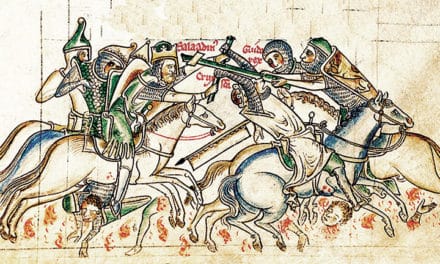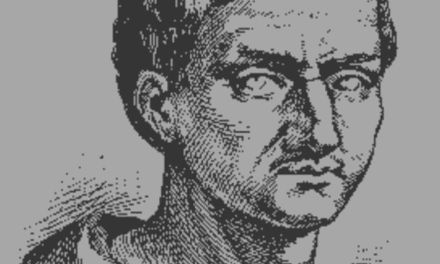This is part 2 of “The Long Road to Reform.”
Before diving into the THE Reformation, we’ll do some review and add detail to the story of the Church. We do this because I fear too many of us may have the impression Martin Luther and John Calvin were wild aberrations. That they just sprang up out of nowhere. Many Protestants assume the Roman Catholic Church got progressively more corrupt during the Late Middle Ages and that Luther was a lone good guy who stood up and said, “Enough!” Many Roman Catholics would agree that the late medieval Church got a bit off but see what Luther did as a gross over-reaction that took him off the rails.
So in this series of podcasts within the larger Church-story, I want to make sure we understand The Reformation was the inevitable result of a long attempt at reform that had gone on for awhile. To do that, we need to go back over some of the ground we’ve already covered.
Pope Clement V made his headquarters the French city of Avignon. For the next 70 years, the popes resided there and bent their policies to the advantage of the French throne. The rest of Europe wasn’t real excited about this, giving this period the title of “The Babylonian Captivity of the Church.”
When Clement V died in 1314, the cardinals found it difficult to agree on a successor so they decided to elect a 72 year old, assuming he’d not last long, but it would afford them time to reach a consensus on a real pope. But Pope John XXII turned out be far more than a mere place-holder. He lived for 18 years and surprised everyone with his vigorous rule. Pope John was determined to make the Italians honor his papacy and sent troops to force down recalcitrant nobles. To finance these military excursions as well as funding the expansion of the papal court at Avignon, John devised a complex tax system. This only added to resentment against his rule.
In the decade Pope Clement VI reigned, nepotism in the Church reached new heights and the papal palace at Avignon rivaled those of the secular courts of Europe in pompous luxury.
Innocent VI made arrangements to move back to Rome but died before doing so.
The eight years of Pope Urban V were marked by reform. Urban was an austere man of great personal discipline. He simplified the life of the court and removed from office anyone who wouldn’t abide his reforms. In 1365, he returned to Rome to the acclaim of the people. But his policies weren’t pro-Italian enough and loyalty to him quickly eroded. When his rule was defied by large groups, he moved back to Avignon.
When Urban V died in 1370, Gregory XI was elected. Gregory’s uncle was Pope Clement VI who made him a cardinal at the age of 17. It’s that nepotism thing I mentioned a moment ago. This Gregory is the pope St. Catherine of Siena urged to return to Rome, we talked about in an earlier episode. On January 17, 1377, amid great rejoicing, Gregory entered Rome. The Babylonian Captivity of the Church was over and most assumed things would return to normal. It was not to be. The Great Papal Schism is just around the corner.
The Avignon Papacies engaged in numerous intrigues and conducted military forays into various regions of Europe that had to be funded. So the popes came up with ingenious ways to raise revenue that furthered corruption. When an ecclesiastical position was vacant, its income was sent to Avignon. So the popes rather preferred that these positons weren’t filled and churches went without bishops. When the positon WAS filled, it was auctioned off to the highest bidder in a return to the practice of simony Pope Gregory VII had worked so hard to end. Since these ecclesiastical offices were a source of income, some men managed to secure several of them. But, being that they could only be in one place at a time, they served as absentee landlords in their parishes. Added to this simony and absenteeism, the nepotism that marked the Avignon Papacy was so bad, by the end of the Babylonian Captivity of the Church, there was a widespread sense of the need for radical reform of the Church. And since it was the papacy itself that needed reform, the voices calling for it increasingly understood reform would need to come from someone other than the Pope.
While I’d love to dive into the story of the Great Papal Schism, I don’t think it would make for very good podcast material. We’ve already given a decent summary of it in previous episodes. Any more would devolve into a long list of names that become a jumble. The intrigues that went on during this time are rich and complex and would make for a great TV miniseries. But we’re going to pass over it now and just say that the emergence of 2, then 3 popes all claiming to be Peter’s rightful heir is one more obvious evidence things had gone horribly awry in the leadership of the Western Church.
It became clear to everyone reform was needed. And in fact, many voices called for it.
During the Great Schism, the conciliar movement wanted to reform the structure of the church while leaving its doctrine alone. Others, like John Wycliffe, who we recently looked at, and Jan Hus we have yet to – concluded it wasn’t just the structure of the Church that needed reform; so did its doctrine.
As a backdrop to all this were the frequent popular movements, especially among the poor, who saw the Mongol threat to the East, the Hundred Years’ War, and the devastation of the Plague as harbingers of the End Times and potential judgments of God on a corrupt State and Church.
The Conciliar Movement arose to deal with the Great Schism. Church leaders realized the history of the church had been dramatically shaped by its councils. They’d kept it ON THE RAILS at times it was being threatened with de-railing. It began all the way back in the 4th C, when Constantine called the first at Nicaea. Other crises were solved by similar councils over the centuries. Then, when popes gained power, the councils became instruments to enforce their power. This was especially true in the famous Fourth Lateran Council, which adopted a long list of polices of Pope Innocent III.
But as papal authority diminished during the Great Schism, many hoped a new council would convene and undo the wrongs that had settled in as the status quo in both Church and State. As this theory grew, advocates said such a council held more authority than the pope because it would represent the WHOLE church, and not the partisan interests of one. Therefore, the council could select a new pope all could and should agree on.
Now, this may seem imminently reasonable to us in the 21st C, but the issue was tied up in a sticking point its advocates had a hard time resolving à and that was this:
Who had authority to call such a council. The first council was called by Constantine. Subsequent councils were convened by a notable church leader, and eventually by the popes. And—the findings of a council had to be officially endorsed by the Pope or they weren’t valid.
This problem was solved in 1409 when cardinals of both sides in the Great Schism, agreed to a great council in Pisa. è And they all lived happily ever after.
You know enough of the history of this period to know that’s not how the story goes. On the contrary, each of the rival popes called his own council to pre-empt the one at Pisa. You gotta’ wonder who would consent to such silliness and be on one of those councils. Wouldn’t you get an invitation and say, “Ah, thanks, I’m so honored. But, ummm, I have to decline. I need to uhhh, ummm – visit my dying uncle in Tuscany.”
It seems this was in fact what some did because both papal councils failed. So the rival popes retreated to strongholds to await the outcome of the Pisan Council. It had the support of both colleges of cardinals and most courts of Europe.
Rather than saying one of the two papal claimants was right, the council declared both unworthy and deposed them. The council then renewed opposition to simony and several other ecclesiastical ills. They elected Alexander V as the new Pope.
Convinced they’d ended the schism, the council adjourned.
Ready for some fun? Here we go . . .
All of this illustrates just how BADLY the Church needed reformation.
Though the Pisan Council deposed the rival popes and installed Alexander, they refused to step down and had enough support to retain their position, in title at least. So now there were 3 popes. Then, months after being elected, Alexander died, and the cardinals appointed John XXIII. Turmoil saw John flee to the German Emperor Sigismund, who was himself in a tussle with 2 claimants to the throne, each supporting a different pope.
Sigismund called another council to put an end to the now 3-way schism. John assumed this new council would endorse his papacy and agreed with Sigismund to call it in 1414 at Constance. The council realized John was not the reformer they needed and deposed him. He fled but was captured and returned to Constance where he agreed to resign. Worried he’d flee again and set up somewhere else, he was consigned to prison for the rest of his life.
Then the Roman pope, Gregory XII, resigned as he’d promised if his rivals did likewise. The Constance council passed some rules for reformation and began the process of picking a new pope, which resulted in the selection of Martin V.
Benedict XIII, last of Avignon popes, took refuge on the coast of Spain, where he continued his claim as pope, but by now, no one was listening. When he died in 1423, no successor was elected.
Those who gathered at Constance hoped to rid the church of heresy and corruption. So they condemned Jan Hus, a guy they should have embraced as a fellow reformer.
Then they fumbled when it came to ridding the church of simony and absenteeism simply because so many in the church’s hierarchy had attained their position that way. It issued some decrees and made provision for future councils that would meet regionally to address local issues.
The next council, called by Martin V as agreed at Constance, gathered at Pavia in 1423, but then moved to Siena due to the plague. Attendance was thin and not much was done. As 1430 and the next council drew near, Pope Martin was inclined to skip it. Advisors informed him the urge for conciliarism was still strong and if he failed to convene it might provoke a new crisis. The council met in Basel, during which Martin died. The council picked Eugene IV as his successor and as soon as he was elected, Eugene adjourned the council. But they refused, and considered deposing him. Under threat by Emperor Sigismund, Eugene withdrew the decree of adjournment.
Up to this point, the Basel Council had gone virtually unnoticed by Europe, but now, all eyes were on it. A council seemed to have gained power over a Pope. Some said the council ought to stay convened and rule the church directly.
It was then that an urgent request for help came from Constantinople being severely threatened by the Turks. Both the Byzantine emperor and patriarch said they were willing to rejoin the Western church and take part in the council, if it would move to a city closer to Constantinople. Eugene saw this as a way to regain some of his mojo and moved the council to Ferrara in NE Italy. Most of the council refused to relocate, but some, in hopes of ending the long rift between East and West, went to Ferrara.
And so it was that the conciliar movement, which had come into being as a response to schism, was itself “schized” (yeah, I know that’s not a word). There were now 2 councils à and 1 pope.
The Council of Ferrara later moved to Florence where it gained recognition for seeing the Eastern Church accept papal authority.
The Council of Basel, meanwhile, became more radical in its pronouncements, causing increasing numbers of its members to leave and head off for Ferarra. Basel deposed Pope Eugene and named Felix V as the new Pope.
Are you keeping track? There are now 2 councils and 2 popes. The conciliar movement, conceived as a way to end the schism resurrected it!
But the truth is, the council in Basel had dwindled down to such a small number that people paid little attention to it. They moved to Lausanne and eventually disbanded when they realized they were irrelevant to church life. Felix V gave up his claim to the papacy.
While it seemed for a while that conciliarism would be a standing feature of church life, in the end, the Popes won. Any future councils would be at their discretion.





